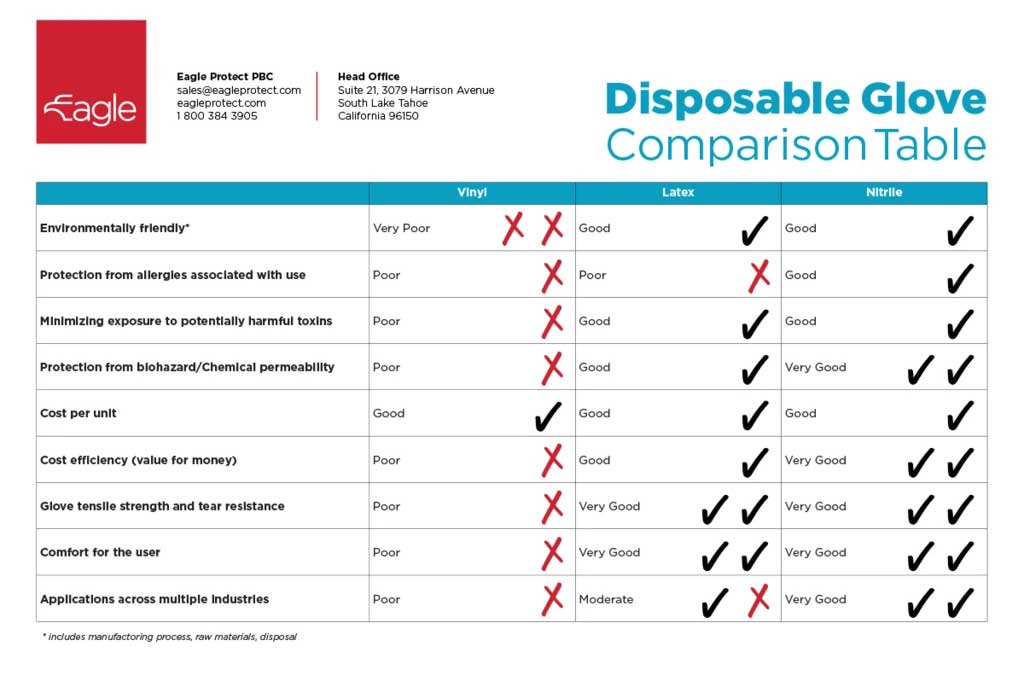Latex gloves are manufactured using a milky fluid derived from the rubber tree, Hevea brasiliensis. A variety of chemicals are added to this fluid during the processing and manufacturing of a latex glove.
Protective gloves are most closely associated with medical and dental laboratory use. However since these types of gloves are excellent in protecting your hands from a number of chemicals, latex gloves are now widely used in a number of industries and have become common in the household.
Before purchasing any type of glove, whether it be latex, nitrile, or vinyl, you have to ask yourself a few things
- What amount of protection are you looking for?
- Are you allergic to any materials that the glove is made from?
- The quality of the glove and how it’s made?
- Powdered or Unpowdered?
- The comfort of the glove?
- The size of the glove?
If protection is your major concern, there a few things you should know about Latex, Nitrile, and Vinyl gloves how they’re made. There are three standard measures that protective gloves are scaled upon.
Medical Grade – For medical use. Highest grade of protection. These gloves are thoroughly tested to pass FDA requirements and exceed a broad range of demanding specifications.
High Risk – For use in the emergency medical services fields. High levels of testing are required to assure proper requirements.
Utility Grade – Not intended for medical use and not tested for FDA specifications. These gloves are great if detail is a necessity. Normally used for painting and general hand protection. They are manufactured to ASTM (American Society for Testing and Materials) specifications.
Here is a table covering the strengths and weaknesses of certain gloves.
source: http://blog.eagleprotect.com/are-vinyl-gloves-cost-effective
Powdered Latex Gloves – Cornstarch is often added to latex gloves to make putting on the glove as smooth as possible.
Glove Size – Most gloves are available in XS, small, medium, large, and XL sizes. Gloves can be manufactured with different cuff lengths, textures, thickness and other characteristics. Use the bullet list below to determine the size you’ll need.
- Use a tape measure to determine your correct hand circumference in inches. Measure at the widest part of the hand.
- The chart below shows you how to find the glove size closest to the hand measurements in inches.
- Sizes may vary among manufacturers and styles.
Make sure not be store latex gloves under conditions of excess heat or light, since this will cause more rapid rubber degradation.
Leading Latex Gloves Manufacturers
Sempermed® – Their manufacturing processes and nearly two centuries of experience have helped make them a worldwide presence in hand protection. Their manufacturing partner, Siam Sempermed, is one of the largest latex examination glove manufacturers in the world. They have three distribution and warehousing facilities, located in New Jersey, Florida and California that help them deliver their goods to clients.
Sempermed®
13900 49th Street North
Clearwater, Florida 33762
Phone: 800.366.9545
Kimberly-Clark Health Care – Headquartered in Roswell, Georgia, manufactures and markets surgical drapes, gowns, sterilization wrap and pouches, personal protective apparel and face masks, and patient care products. With recent acquisitions of Safeskin Corporation and Ballard Medical Products, Kimberly-Clark added disposable gloves and a wide range of surgical and patient care devices to its product portfolio.
Kimberly-Clark Health Care
1400 Holcomb Bridge Road
Roswell, Georgia 30076
Phone: 800.524.3577

